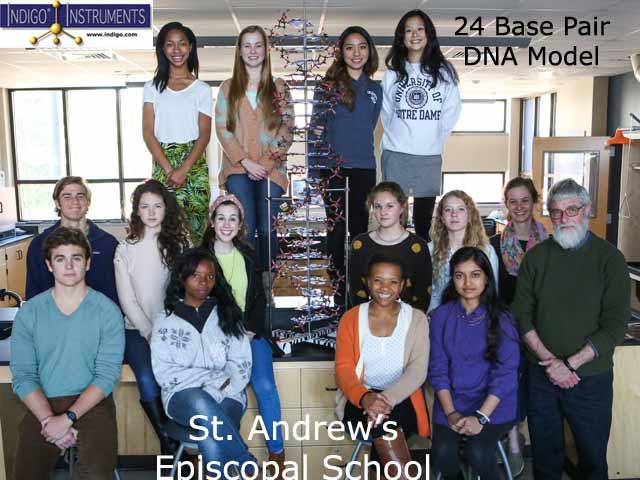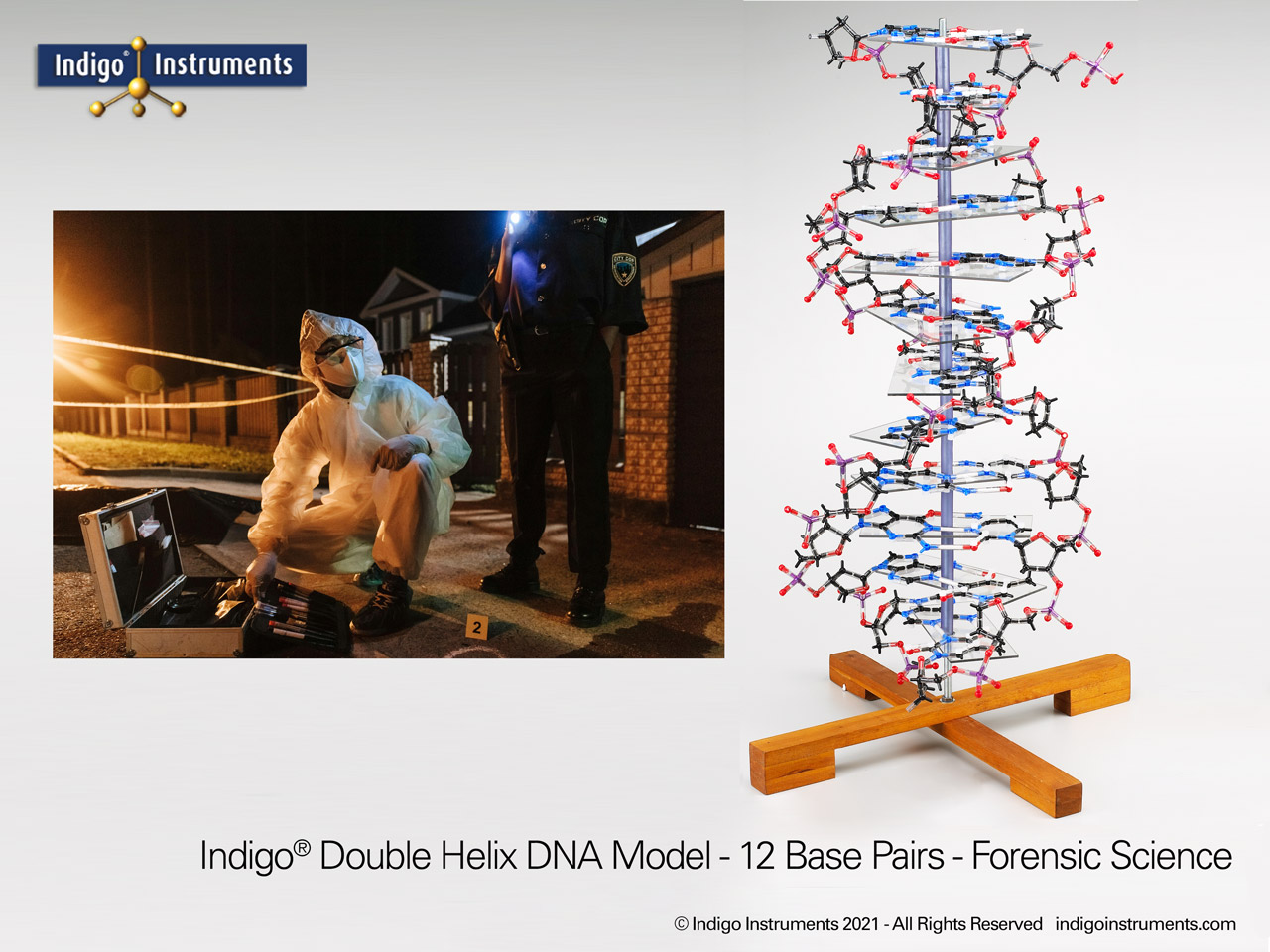DNA Double Helix Ancestry Teaching Model
SKU: 68795WS
Build a 24-base-pair DNA model to explore genetic variation, ancestry, and human diversity. Ideal for teaching population genetics and genealogy.
This 24-base-pair DNA double helix model (uses 2 standard Indigo® 12 base pair models) demonstrates the power of genetic variation in ancestry and genealogy studies. With over 16 million possible sequences, even a small stretch of DNA can illustrate how genetic markers are used to distinguish individuals, trace family relationships, and explore population diversity across generations.
This 24 base pair DNA double helix model is an engaging way to explore how genetic variation underpins ancestry, genealogy, and heredity. While a full human genome contains over 3 billion base pairs, even a short sequence like this demonstrates the concept of nucleotide pairing and how DNA sequences encode the diversity seen in populations. Students and hobbyists interested in ancestry DNA testing, family genetics, or evolutionary biology can use this model to visualize how changes in sequence create genetic markers that are inherited across generations. It provides a tangible way to link molecular biology with ancestry research, population genetics, and the study of human evolution.
Most ancestry services today rely on single nucleotide polymorphisms (SNPs) — single-letter changes in the DNA code that distinguish one population from another. A 24 base pair DNA model makes it easy to demonstrate how even one swapped base pair can represent a genetic marker used to map ancestry. This hands-on visualization links molecular structure directly to the large-scale questions of human evolution, diversity, and genetic identity.


Thanks for the detailed review. Our Big Bang Theory DNA model is more impressive in many ways but as you have noted, this is the better teaching model & has great value.